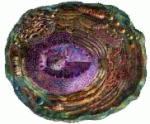Cell Biology
|
21 september 2014 05:37:36 |
| The Dioxin receptor modulates Caveolin-1 mobilization during directional migration: role of cholesterol (Cell Communication and Signaling) |
|
Tweet Background:
Adhesion and migration are relevant physiological functions that must be regulated by the cell under both normal and pathological conditions. The dioxin receptor (AhR) has emerged as a transcription factor regulating both processes in mesenchymal, epithelial and endothelial cells. Indirect results suggest that AhR could cooperate not only with additional transcription factors but also with membrane-associated proteins to drive such processes.
Results:
In this study, we have used immortalized and primary dermal fibroblasts from wild type (AhR+/+) and AhR-null (AhR?/?) mice to show that AhR modulates membrane distribution and mobilization of caveolin-1 (Cav-1) during directional cell migration. AhR co-immunoprecipitated with Cav-1 and a fraction of both proteins co-localized to detergent-resistant membrane microdomains (DRM). Consistent with a role of AhR in the process, AhR?/?cells had a significant reduction in Cav-1 in DRMs. Moreover, high cell density reduced AhR nuclear levels and moved Cav-1 from DRMs to the soluble membrane in AhR+/+but not in AhR?/?cells. Tyrosine-14 phosphorylation had a complex role in the mechanism since its upregulation reduced Cav-1 in DRMs in both AhR+/+and AhR?/?cells, despite the lower basal levels of Y14-Cav-1 in the null cells. Fluorescence recovery after photobleaching revealed that AhR knock-down blocked Cav-1 transport to the plasma membrane, a deficit possibly influencing its depleted levels in DRMs. Membrane distribution of Cav-1 in AhR-null fibroblasts correlated with higher levels of cholesterol and with disrupted membrane microdomains, whereas addition of exogenous cholesterol changed the Cav-1 distribution of AhR+/+cells to the null phenotype. Consistently, higher cholesterol levels enhanced caveolae-dependent endocytosis in AhR-null cells.
Conclusions:
These results suggest that AhR modulates Cav-1 distribution in migrating cells through the control of cholesterol-enriched membrane microdomains. Our study also supports the likely possibility of membrane-related, transcription factor independent, functions of AhR. |
| 138 viewsCategory: Cell Biology |
 Transient TNF regulates the self-renewing capacity of stem-like label-retaining cells in sphere and skin equivalent models of melanoma (Cell Communication and Signaling) Transient TNF regulates the self-renewing capacity of stem-like label-retaining cells in sphere and skin equivalent models of melanoma (Cell Communication and Signaling)Calcium is the switch in the moonlighting dual function of the ligand-activated receptor kinase phytosulfokine receptor 1 (Cell Communication and Signaling) 
|
| blog comments powered by Disqus |
MyJournals.org
The latest issues of all your favorite science journals on one page
The latest issues of all your favorite science journals on one page



